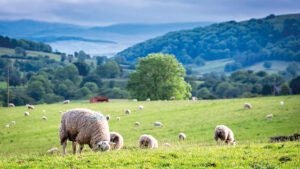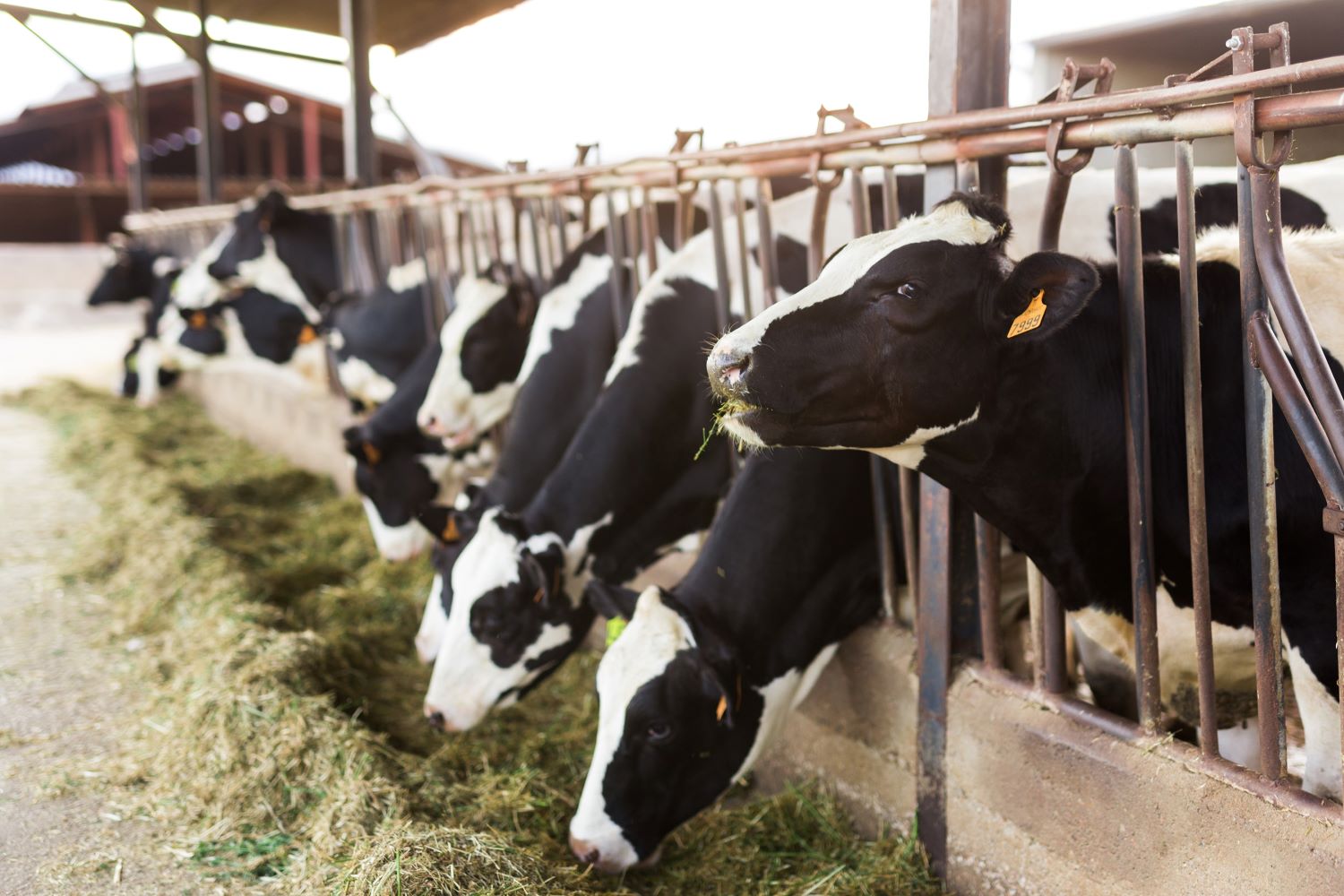Ruminant health: Key trends of 2022
28th December 2022
As weather patterns become increasingly extreme and unpredictable, input costs continue to rise, and farmers face ongoing pressure to reduce environmental impacts, approaches to managing parasites and disease will need to adapt. Livestock editor Sarah Kidby reports.
Whilst we saw the usual challenges of coccidiosis and nematodirus in spring, the extremely hot, dry weather in much of the UK during summer 2022 resulted in an unusual parasite season. Worm egg count data from Elanco suggested virtually no worm challenge over the summer as lifecycles paused, according to ruminant technical consultant Matt Colston.
However, many of the unhatched worm eggs left on pasture survived until the rains came in autumn – resulting in a massive larval challenge a few weeks later, on a scale we haven’t seen before, he added. Speaking to Farmers Guide in late November he said: “Even now, we’re still seeing huge worm egg counts. One sample last week showed 15,000 eggs per gram. Usually, we’d be getting worried if we saw 500 eggs/g.”
Despite this, many farmers were using unnecessary worm drenches, which highlights the importance of regular testing to avoid wasting time and money. “For beef, sheep and dairy farmers, money’s going to get tighter, and you can’t afford to be spending time, money and resources on things that aren’t worthwhile,” Mr Colston added.
SCOPS recently reported high worm burdens in UK lambs, resulting in significant losses, from poor growth rates to deaths. This situation has likely been exacerbated by the fact that many of this year’s lambs have not met enough of a challenge from worms over the summer to stimulate their immune systems, points out independent sheep consultant Lesley Stubbings.
“Lambs on forage crops also need to be monitored, because if they took a significant burden on to the crop with them, these worms may have multiplied over the autumn to levels where they are a threat. Worms can complete their lifecycles on forages other than grass, so don’t get caught out,” she adds.
SRUC Veterinary Services similarly reported a peak in diagnoses of parasitic gastroenteritis, as well as low selenium levels, in ill thriven lambs in the last few months of the year. Guidance shared via the AHDB recommended checking the worm egg counts of ewe lamb replacements and store/fattening lambs as soon as possible, then monthly. Trace element status should also be assessed, especially if concentrates are not being fed. Blood samples could be used to check for exposure to liver fluke using the ELISA test.
Zoetis vet Ally Ward also urged farmers to monitor animal growth rates and faecal egg counts, treating where necessary, to ensure productivity is not affected by the high worm challenge.
It was a similarly unusual year for blowfly strike, with more cases potentially being seen in September and October than the summer, Elanco data suggests. This was due to a combination of warmer weather in these months providing ideal conditions for blowfly, and the fact that the efficacy period of preventative treatments used to cover the normal blowfly period had run out.
“While most lambs would have gone by this point, those that remained would have been exposed to significant risk at a time when a lot of farmers weren’t expecting it,” Mr Colston said.

Herd of sheep on green pasture in District Lake, England
Blowfly season is starting earlier and lasting longer thanks to milder winters – with cases still being reported at the time of writing in November. Ms Stubbings says the season is now around eight months long, a scenario with no easy solution. Farmers will need to be more vigilant in keeping back ends trimmed and checking animals daily, though the latter can be challenging to achieve, she noted.
When it comes to managing internal parasites in an increasingly unpredictable climate, regular testing will be key. “We’re fairly certain that the weather patterns are going to get more unpredictable, so the only advice we can give is replace routine treatment with routine monitoring, and treat when you need to,” Mr Colston said.
On a positive note, there are high-quality, relatively cheap and easy-to-use testing tools available for both worms and liver fluke.
Lungworm in cattle has been variable this year but followed a similar pattern to other parasites, with a minimal challenge in summer and a resurgence in August to October. SRUC’s veterinary investigation officer Heather Stevenson confirmed lungworm diagnoses remained steady this autumn but concerns over treatment failure were a common reason for submitting samples for testing.
Meanwhile, when it comes to liver fluke, the overall challenge is expected to be low but the bulk of the country is likely to see a challenge later in the season than usual – in December/January rather than September/October – but it will be so variable that it’s impossible to give even a regional idea of what will happen, Matt said.
However, another factor to consider even in very hot dry weather, is that for those farms that do have a liver fluke problem, snails are isolated to small, wet areas of the farm, which is also where livestock go to drink, Ms Stubbings points out. Commenting on 21st November, Heather Stevenson said there had not yet been any recorded sheep deaths due to acute liver fluke infection.
Despite a generally delayed parasite challenge in 2022, parts of the UK such as the west coast and north of Scotland, didn’t experience the heatwave in summer, so the parasite picture there was completely different.
The effect of rising input costs
With farmers facing exorbitant input costs, veterinary medicines can be one of the first things to be trimmed back, but it’s important to make sure this doesn’t result in losses, Ms Stubbings advises. Feed contracts for the coming winter reveal an approximate 25–30% hike in feed costs, she adds, so getting the most out of your forage and knowing the quality and quantity available, is key for minimising the amount of supplement fed. In many cases, there are significant savings to be made if forage is analysed and/or grazing is allocated effectively, Ms Stubbings says.
Furthermore, while the cost of veterinary medicines is by no means insignificant, the consequences of disease can be far more costly – for example, replacement costs if ewe losses rise by 1–2% because of lapsed vaccinations. Whilst it can be tempting to focus attention on cutting inputs, output still matters to offset the increased costs. Cutting vaccinations could put enterprises in jeopardy, Ms Stubbings warns, so improving efficiency elsewhere is doubly important.
Reducing environmental impact
As farmers continue to face pressure to meet tough environmental targets, reducing the impact of endemic diseases such as sheep scab and BVD should be a top priority for 2023, according to Nigel Miller, chairman of the Ruminant Health & Welfare Group.
“The production, cost and welfare gains of control are clear, as are the challenges of tackling what are versatile and highly infectious conditions […]” he commented. “On some farms parasitic worms, liver fluke and respiratory conditions present ongoing challenges impacting performance, compromising welfare and leading to a potential increase in mortality levels.”
According to the group’s report, Acting on methane, a 10% reduction in emissions from livestock is feasible through achieving a high-health status across the national herd and flock, with further reductions possible through changes to breeding and feeding systems.
“As an example, studies show that gastrointestinal parasites in lambs lead to a minimum 10% increase in greenhouse gas emissions, while liver fluke infection adds an extra 19 days to the time to slaughter in cattle, adding 2% to the greenhouse gas footprint of those cattle,” Mr Miller said.
Pathway priorities
The government’s Animal Health and Welfare Pathway is set to offer funding opportunities for enhancing animal health, welfare and productivity, and reducing environmental impacts.
Initial priorities for cattle include tackling BVD, lameness and mastitis, as well as improving pain management during disbudding, dehorning and castration through greater adoption of prolonged anaesthesia. Another focus is improving welfare at pasture through better drainage, shelter, gateways and tracks that support normal behaviours.
And finally, upgrading housing, as many farm buildings are not optimally designed for cattle, especially calves – so the Pathway will encourage improvements in ventilation, cow comfort, loafing areas and enrichments such as scratching brushes.
For sheep, the focus will be on tailored health screening to address endemic diseases that cost the sector £85 million a year – starting with internal and external parasites and associated anthelmintic efficacy, mastitis, iceberg diseases and abortion. Additionally, reducing lameness, improving ewe sustainability and optimising body condition. Finally, the government says it wants to support licensing and uptake of pain relief, for improved pain management during castration and tail docking.
The first annual Health and Welfare Reviews began in September 2022 ahead of the official launch to all eligible farmers in January 2023. This involves an annual vet visit, diagnostic testing, reviewing biosecurity and medicines use and bespoke advice on actions and available support. It is initially open to farms eligible for the Basic Payment Scheme with more than 10 cattle, 20 sheep or 50 pigs.
Future schemes due for launch include capital grants, disease eradication and control programmes, and payments by results.

